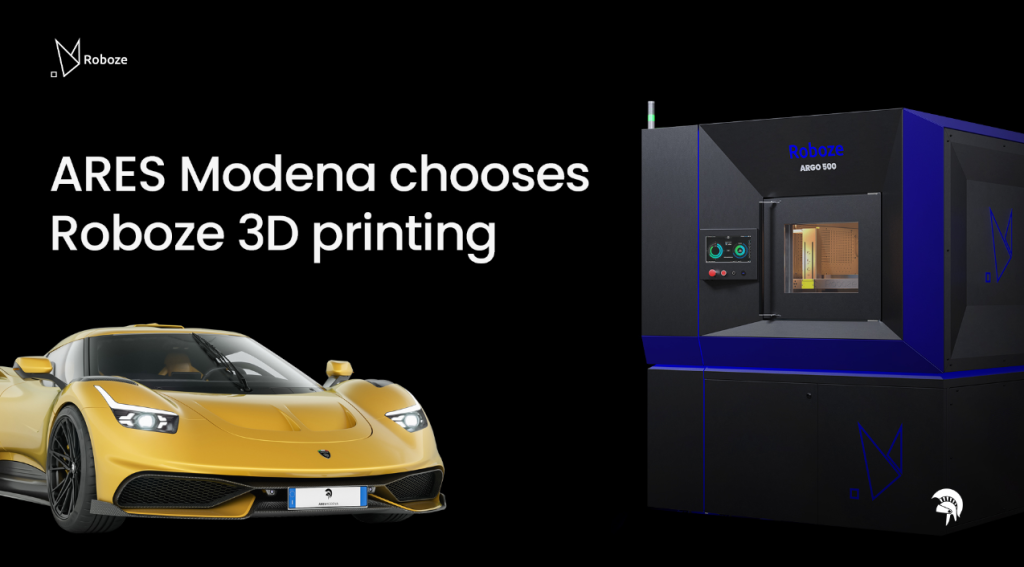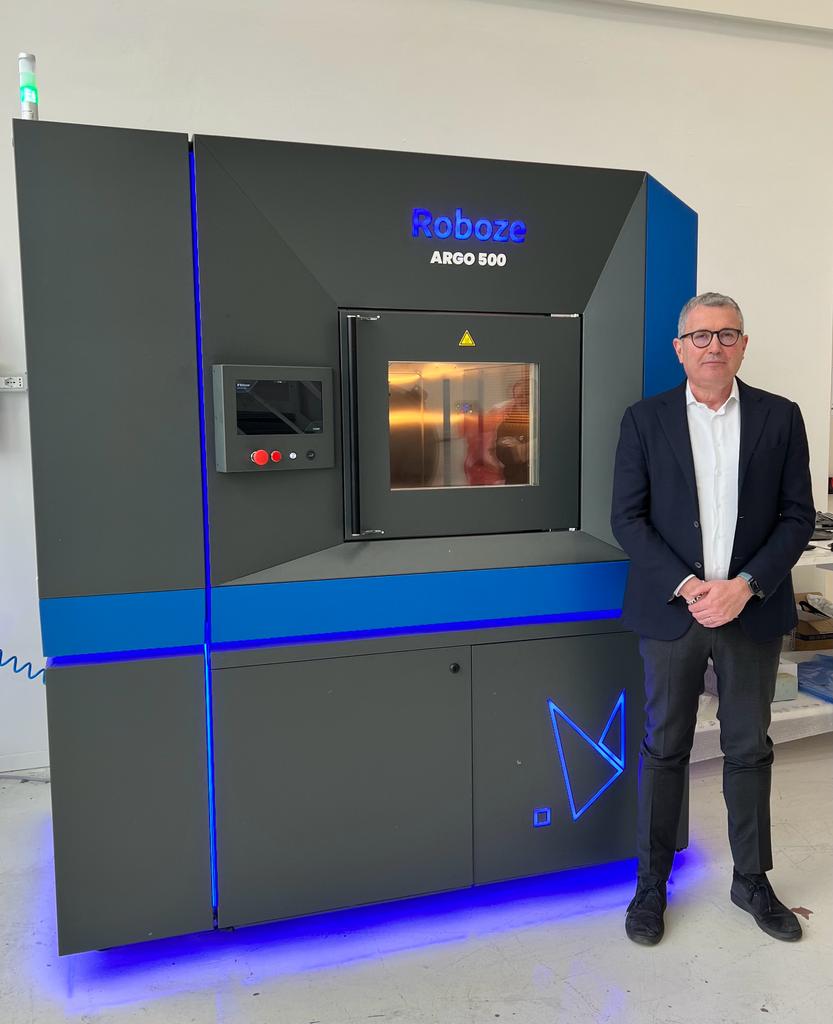ARES Modena, a luxury car customization company, is using Roboze’s industrial 3D printing technology to create bespoke vehicles.
Roboze’s ARGO 500 FFF 3D printer will be installed at ARES Modena’s sophisticated 23,000 m2 facility, which was set up in January 2018. Roboze says that its 3D printing technologies can improve process repeatability, and increase precision. It also enables the production of custom parts by employing high-performance polymers and materials. ARES Modena, located in the heart of Italy’s Motor Valley, produces “bespoke road jewels”, that are created and manufactured to order. For example, a Bentley Mulsanne Coupe or the Legends Reborn program which updates iconic supercars.
“We chose Roboze for their industrial approach in 3D printing and their deep knowledge in materials science,” said Alberto Migliorini, Head of Technologies and Production of ARES Modena. “We are convinced that thanks to this solution we will further raise our level of design, development, and production.”
“ARES creates unique and highly prestigious vehicles. ARES customers want the best performance ever,” added Alessio Lorusso, Founder and CEO of Roboze. “At Roboze, we have always had the goal of creating solutions that allows us to overcome current and future industrial challenges, using technology and science to solve complex problems. With ARES, we are convinced that all this can have free space, accelerating innovation and increasing the application opportunities to industrial 3D printing with high-performance materials, opening new paths for the manufacturing of the future.”

“Opening new paths for the manufacturing of the future”
The ARGO 500 has a large build volume of 500 x 500 x 500 mm, enabling it to produce larger parts. It can 3D print metal replacement parts that are 0.5 cubic meters in size. The 3D printer can use advanced polymers, including PEEK, Ultem AM9085F, Carbon PA, and Carbon PEEK, materials used for engineering or industrial applications. As a result, it is suitable in sectors like aerospace, automotive, and medical that need long-lasting, heat-resistant, or chemically resistant components.
ARGO 500’s automatic bed leveling system is designed to ensure that each 3D print’s first layer is precise, and the system can resume printing after a power outage. It contains a closed chamber that aids in temperature control and warping reduction. The user saves time by pre-heating the build chamber quickly. The 3D printer also features the company’s patented Roboze Beltless System technology, which offers mechanical tolerances of 25 microns. Additionally, it improves part repeatability by removing discrepancies caused by belt stretching and wear.
Other quality-of-life features include a vacuum plate system for improved component and build plate adhesion. Using a vacuum plate permits 3D printing on polymer films and allows for easy detachment once the job is complete. The vacuum plate provides additional stability during large and long prints and keeps the first layers level.

Using 3D printing in the automotive industry
In the automatic sector, 3D printing is now used at all levels. Recently, US-based 3D printer manufacturer 3D Systems, revealed that BWT Alpine F1 has bought four of its SLA 750 3D printing systems. Alpine F1 purchased these machines to help manufacture components for wind tunnel testing, as the team already prints 25,000 parts per year using 3D Systems’ SLA and SLS technology. The 3D printers use an Accura Composite PIV material designed to help decrease preparation time and enhance performance. This is accomplished by 3D printing parts with high sidewall and surface quality, excellent feature detail, and high geometric accuracy, reducing post-processing and finishing time.
In contrast to the low-volume and high-value applications in the Formula One world, 3D printing is also used by enterprises in the mass market. Japanese automaker Toyota revealed how Zortrax’s 3D printing technology has optimized its vehicle assembly operations. Toyota has transitioned from CNC machining assembly jigs and fixtures to on-demand production with Zortrax M300 Plus systems at its two Polish facilities in Walbrzych and Jelcz-Laskowice. The automaker has lowered costs and lead times associated with the production of essential tools and spares, thereby optimizing its production line performance.
What does the future of 3D printing hold?
What engineering challenges must be tackled in the additive manufacturing sector in the coming decade?
To stay up to date with the latest 3D printing news, don’t forget to subscribe to the 3D Printing Industry newsletter or follow us on Twitter, or like our page on Facebook.
While you’re here, why not subscribe to our Youtube channel? Featuring discussion, debriefs, video shorts, and webinar replays.
Are you looking for a job in the additive manufacturing industry? Visit 3D Printing Jobs for a selection of roles in the industry.
Featured image shows ARES Modena’s car and Roboze’s ARGO 500 3D printer. Image via Roboze.



